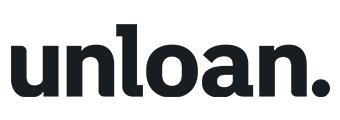Housing costs are typically the biggest regular household expense. Rent can take up a huge chunk of a person’s budget, particularly if they’re on a low income. On the other hand, escaping the rental market generally means securing a home loan, and many low income earners might not believe they're eligible for a mortgage due to their below-average paycheque.
In reality, a high income isn't necessarily the primary criterion lenders consider. That's generally your ability to meet your repayments.
If you know you're capable of meeting your home loan repayments and you have evidence to back up that belief, you're likely more than capable of securing a mortgage.
What is a low income home loan?
Generally speaking, there’s no such thing as a ‘low income home loan’. Rather, some home loans are more suitable for low income earners than others.
Such a home loan might simply be smaller than average.
Unfortunately, those on a lower-than-average income mightn’t be able to service the mortgage on a median-priced home.
Australia’s median dwelling price, as of November 2025, is around $872,538, according to Cotality data.
See also: Median house prices around Australia
Assuming a buyer has a 20% deposit ($174,507) and can secure a typical interest rate – 5.5% for new, variable rate, owner-occupier loans in September, as per the RBA – the monthly repayments on a median-priced property would be around $3,963 a month.
If you’re on a low income and feel you can’t afford such repayments, you might consider buying a low-priced home.
A mortgage might also be considered more suitable for low income earners if it offers low fees, a lower interest rate, or a higher maximum loan-to-value ratio (LVR) – meaning a person needs a smaller deposit to secure it.
Buying a home or looking to refinance? The table below features home loans with some of the lowest interest rates on the market for owner occupiers.
Lender Home Loan Interest Rate Comparison Rate* Monthly Repayment Repayment type Rate Type Offset Redraw Ongoing Fees Upfront Fees Max LVR Lump Sum Repayment Extra Repayments Split Loan Option Tags Features Link Compare Promoted Product Disclosure
Promoted
Disclosure
Disclosure
Promoted
Disclosure
What is considered a low income in Australia?
There is no exact figure to separate low, middle, and high incomes.
However, we do know the median Australian employee brought in $2,010 a week in May 2025, as per Australian Bureau of Statistics (ABS) data.
Meanwhile, a 38-hour working week on the minimum wage ($24.95 an hour) would garner $948.
It’s far from uncommon for a person to earn less than that, though. Particularly if they’re a casual or part time worker, or if they receive a government pension. A family might also be considered low income if it shares a single income.
If one of the above scenarios apply to you, or you feel that your income is below average for another reason, it doesn’t mean you’re out of the property race entirely.
Though, when it comes to financing a home loan, you might face more scrutiny from a lender compared to, say, a dual-income household or a high-income earner. A lender ultimately looks at the figures you bring in and keep in, and this isn’t limited to your paycheque.
It will likely consider other forms of income too, such as Centrelink or child support payments, various pensions, and any ongoing, predictable income stream you’re able to put towards your day-to-day expenses.
While considering your income, a lender will also consider your capacity to repay a mortgage and simultaneously service your living costs and spending habits. That means your outgoings are often just as important as your incomings.
If you earn a low income and also lead a notably frugal lifestyle, you could have a good chance of being approved for a competitive home loan.
Tips to finance a home purchase on a low income
As mentioned above, people on a low income might find it more challenging to be approved for a home loan than higher earners. However, by strategically focusing on specific elements of your home loan application, you can enhance your prospects of purchasing a property.
Here are some tips on how to stand out to a potential lender.
Save up a deposit
Having a sum of money you’re willing to put down as a deposit on a home can help your application in two ways.
- It can prove to a lender that you’re disciplined enough to save money and are capable of cutting back your expenses to achieve a goal, and
- Your deposit can, in a way, insure a lender against potential losses
If you default on your loan, your lender will likely take possession of your home. The lender will probably then sell your home to recoup its losses. If the lender can’t sell the home for the same amount or more than you paid for it, it could be out of pocket. That is, unless you put down a deposit - in which case, the lender only has to recoup the amount you borrowed, not the entire value of your home.
A deposit might also help you avoid Lenders Mortgage Insurance (LMI), which is typically required if you borrow more than 80% of a property’s value and can add up to tens of thousands of dollars.
Not to mention, having a substantial deposit can make you eligible for a lower rate home loan – particularly helpful for those on a low income. The lower your interest rate, the less your monthly repayments will be, and the more you can potentially borrow.
Finally, putting down a notable deposit also means you borrow less than you would if you didn’t have a deposit. Therefore, your repayments will be lower than they otherwise would be.
See also: Understanding your Borrowing Capacity
Join forces with someone
Often, a household can be considered low income simply because it shares a single income. In such cases, teaming up with someone else – perhaps a partner, friend, or family member – might help to speed up the home buying process. This sort of situation is commonly called a property joint venture, and it can benefit both parties involved.
A homebuyer might choose a joint venture partner who also wishes to move into the property, or their joint venture partner might be happy to enjoy the capital gains property can provide without living in the home themselves.
This avenue may mean both parties share the deposit and monthly loan repayments, and they would likely also share the risks and potential losses involved.
Remember, it’s important to seek legal and professional advice on property joint ventures before signing onto one.
See also: The pros and cons of buying a house with family or friends
Get a guarantor on board
Another way to appear more attractive to a lender is to have a guarantor.
While not everyone has someone in their lives with enough assets to be a guarantor, those that do might wish to ask that person if they would be willing.
A guarantor can provide reassurance to a bank, promising that if the borrower defaults on their home loan the guarantor will take responsibility of the repayments. For that reason, taking on the role of guarantor for a home loan can be risky and shouldn’t be taken lightly.
However, if you have someone in your life who is willing to be your guarantor, that person could save you from paying LMI or make you eligible for a lower-rate home loan.
Pay off consumer debt first
Many experts recommend wishful buyers consider paying off consumer debt, such as credit card debt or car loans, before applying for a home loan.
Regular credit card or personal loan repayments will eat into your weekly budget, leaving you with fewer funds to put towards other expenses – like home loan repayments. That, and the fact a person can only borrow so much, could eat into your borrowing capacity.
Ergo, it's likely that the more debt you bring to the table, the less money a home loan lender will loan you to purchase a property.
Not to mention, meeting the regular repayments on other debt products can improve a person’s credit score, and a healthy credit score can go a long way to securing a competitive mortgage.
Banks and lenders typically also consider a person’s buy now, pay later (BNPL) usage when hunting for existing debt, so it might be a good idea to pay off any Afterpay purchases or close down BNPL accounts before seeking pre-approval.
Make use of government schemes or grants
Another way to make your income or deposit (or both) go further is to lean on government grants or schemes.
The 5% Deposit Scheme allows eligible first home buyers and single parents to enter the property market with a deposit of as little as 2% or 5% without paying LMI, potentially saving thousands.
On top of that, each state and territory, with the exception of the ACT, offers grants of up to $30,000 for first home buyers purchasing eligible properties. That money can, in some cases, be used to bolster a deposit.
If the threat of stamp duty is holding you back, you might be interested to know that many state and territory governments waive or discount the tax for eligible first home buyers.
Finally, the Help to Buy scheme is expected to launch this year. The shared equity scheme will see the Federal Government purchasing up to 40% of an eligible homebuyer's property, allowing them to secure a smaller, potentially lower-rate mortgage.
Branch out: Consider purchasing property in cheaper areas
Another way Australians could potentially make their low income stretch further in the housing market is an impactful one. That is, buying in a cheaper area.
If you’re living in a capital city, that might mean moving further from the CBD or to a less-desirable suburb. Remember: The first step into the property market is often the hardest, and a home for now doesn’t need to be a home forever.
It might also mean moving out to the regions. Property prices in regional Australia are typically far lower than those in the cities or in regional centres.
See also: The cheapest places to buy Australian property
As of February 2024, the median price of a dwelling in an Australian capital city was nearly $960,000. In regional Australia, meanwhile, a median-priced dwelling would set a buyer back just over $710,000.
Image by Emil Kalibradov on Unsplash
First published in March 2024






Share